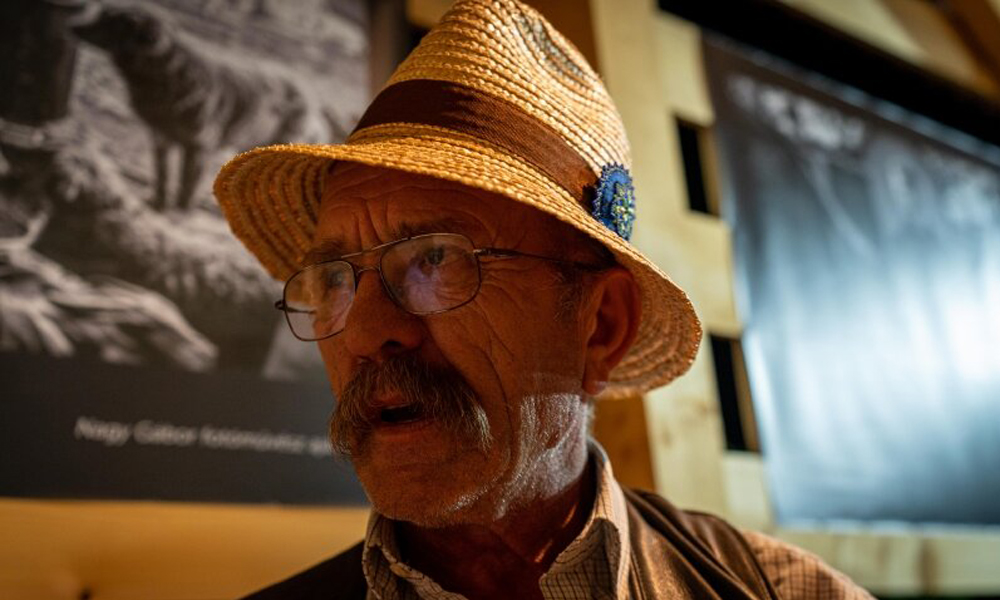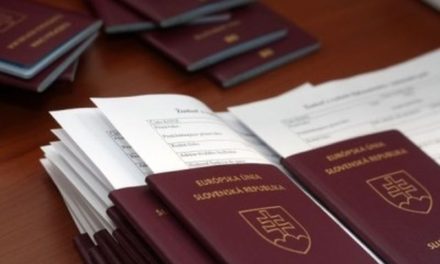Laci Türei is gone, he is also gone, the greatest connoisseur of Kalotaszeg and Transylvania.
László "Türei" Lengyel was born on September 17, 1957, in the village of Kalotaszeg, which belongs to Nádasmente, Türe, as the second child of four brothers. He was the classic, perhaps the last, ethnographic researcher and data collector, who knew more about the culture of Transylvania than anyone else.
He completed his elementary school in Hungarian in his native village, and his further studies in Romanian in Magyargorbó, Egeres and Cluj-Napoca, obtaining a locksmith-welding qualification at a vocational school. In 1977, when he was drafted, he denied that he was in school, so he was taken as a soldier. He completed his military service in Fogaras and Bucharest. After demobilization, he graduated from the evening course, then trained as a doctor. As was customary at the time, he knew biology without a book. He really "devoured" books, but due to his eye disease, he couldn't read for half a year, and with that, he failed the admission to the medical school.
In 1980, he lost his father at a young age and became the breadwinner. His sister studied at university, his younger brothers studied at secondary school, his mother worked in agriculture, and he was employed as a skilled laborer in Cluj, he worked in construction, did welding and auto tinning work, he also earned money with stone carving, thus helping his widowed mother in raising the four children.
In the spring of 1979, he met and got to know Zoltán Kallós at the dance hall in Cluj-Napoca, who, hearing his singing voice, began to encourage him to learn folk songs from the singers of Türe.
Folk culture was no stranger to him, he lived in it, he even loved it, so at the encouragement of Uncle Zoli Kallós, he started collecting at first in Türe, then - after acquiring a recording device - in Magyarlóna, Bodonkuto, Méra, Vista. In the following weeks, he already brought him recordings on cassettes, and then took them with him to the surrounding villages to collect. Laci Türei - because she is still called by that name by her friends - returned home from the "field" and hid the books, supplementing her knowledge of Kalotaszeg and folk art in general. As his singing skills grew, he also taught singing in the dance halls during the eighties.
In 1981, he participated in the first Táncház meeting in Budapest, and again in 1983, but after that he did not receive a passport to travel out of the country for a long time.
But that didn't stop him either, and in addition to collecting folk songs and folk music, he also took part in the organization of movement life. After the dance hall was banned in 1983, "Samizdat dance halls" were organized at private houses (with Csaba Sándor and Sándor Bardócz) as well as balls in Türe, Bogártelké, and Méra. Although police harassment was quite frequent - in 1987 in Moldova, for example, all recorded material was taken away from him - the passion for collecting was rather hindered by the lack of money and equipment.
The regime change in Romania in 1989 also rearranged his life, since the opened border made it possible to travel to Hungary, and he was finally able to get to Budapest for the spring dance hall meeting, which was considered a farewell place for folk musicians and dancers at the time. But he took a role in the dance house that reopened in Cluj in 1990, and then also in the organization of the first dance camp in Kalotaszentkirály, where he regularly taught singing in later years.
He experienced that authentic folk music, folk songs and folk dances must be learned from authentic sources, so he organized the performances of informative musicians, singers and dancers at festivals, dance halls and events in Hungary.
In the 1990s, interest in traditional Iranian musicians and folk songs became limitless, in every sense. At that time, he went to countless foreign festivals and performed with the other informants. In the meantime, he helped visitors to Transylvania with all his might, whether they were interested laymen or those on a professional journey who were looking for informants.
In 1991, as a folk singer, he received the title of Young Master of Folk Art.
On several occasions, he helped the informants to organize and travel to Dance Meetings in Budapest, the Csángófestival in Jászberény and many other festivals and celebrations. He encouraged young musicians who were interested in traditional folk music, such as the Čsůrős band.
During his travels, he reached and got to know every corner of Transylvania, but he knew the musical material of Kalotaszeg the best. He sang the songs of the landscape unit on several publications.
In 2014, he was awarded the EMKE prize for his activities in the Transylvanian dance hall movement and his work for the preservation of the folk song treasure of Kalotaszeg.
A contributing partner of the Hágyomány Hás since its establishment, he has tried to uncover the white spots of the ethnographic map of Transylvania, mainly musicians.
From February 2021, he worked as an employee of the House of Transylvanian Traditions, where his life continued to be collecting, in addition to searching for musicians, he also collected photographic material from the areas he visited, which capture traditional folk life, culture and clothing.
In August 2022, he received the Martin György Award, named after the legendary ethnographic researcher, which is awarded by the Hungarian state in recognition of outstanding work in folk art.
There are those who think that the movement should enter adulthood now. Because the sure reference is gone. Until now, Laci Türei was always there, and if you called him, he immediately helped and did everything right away. Besides, he knew everything.
I only met him twice. But I already know that it's not "just". I have to say that I was lucky enough to meet him twice. Once in Marosvásárhely, when there was a performance of the Trianon program put together by Ákos Csúri and István Pál Szalonna, and secondly last year in the Káli pool at the first Kőfest - A Szabad Tancház, where he brought us Uncle János Füstös from Feketelaka, Aunt Anna Hideg from Ördöngösfüzes and Isteni héz film about Csángáló from Szaszcsávás. But he brought not only the film, but also Ferenc Mezei himself. I knew then how important a person he was. Sorry, it's essential.
In his CV he wrote:
"I do my job with pleasure, I see it as a service with which I contribute to the exploration of a slice of Hungarian culture."
But he did much more than that.
Source and featured image: hetijoarc.blogstar.hu












